Types of Ingrown Hairs
Many people are familiar with the problem of ingrown hair, especially those who have thick, coarse, and curly hair. Ingrown hairs often appear after shaving or waxing, and after the usage of an epilator or tweezers.
5-Minute Crafts would like to tell you about the types of ingrown hairs and help you identify them.
What an ingrown hair is
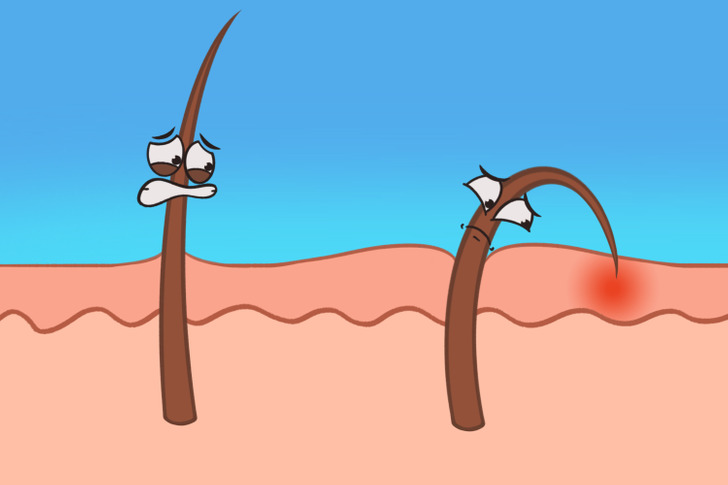
Each hair follicle has a hair that grows to the surface of the skin. After removal, the hair continues to grow.
Usually, the hair grows out of the follicle and rises above the surface of the skin. An ingrown hair grows into the skin instead of out of it, which can lead to the inflammation of the hair follicle.
What causes ingrown hairs
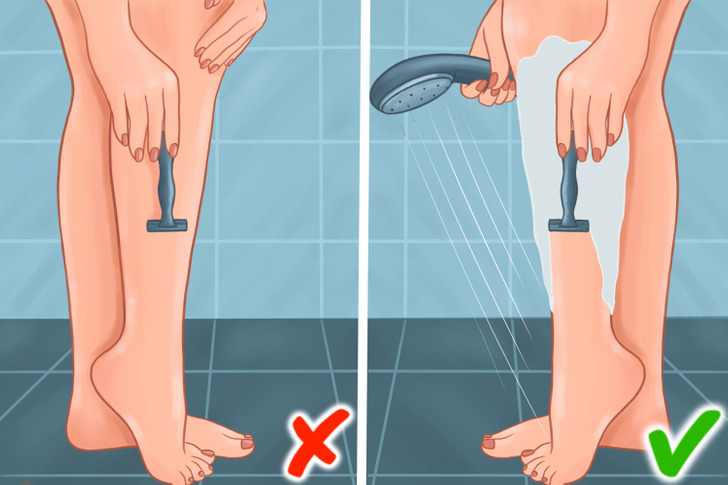
- The most common cause of ingrown hairs is the wrong hair removal technique. For example, when shaving on dry skin, the tip of a hair becomes sharp. As it grows, it pierces the top layer of the skin and grows inward.
- Hair follicles can become clogged with dead skin flakes or external pollutants. In this case, there is no room for hair to reach the surface, and it begins to grow under the skin.
- Curly hair, the direction of hair growth, or genetic predisposition can cause ingrown hairs.
- Tight clothing can sit snugly against the skin, and constant friction from the movement of the body leads to gradual ingrowth.
When a hair gets under the skin, the skin reacts to it as if it were a foreign body, so it becomes inflamed.
How to identify an ingrown hair
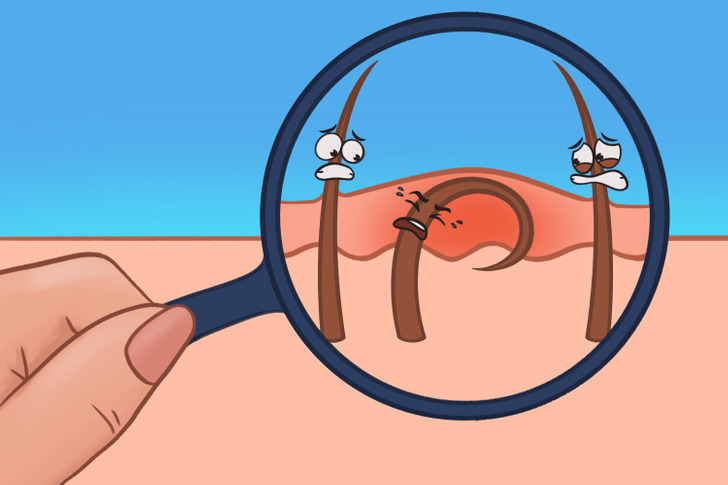
First, a small bump appears on the surface of the skin, which resembles a pimple. Sometimes you can even see the ingrown hair that’s causing the problem. The skin may become red and will hurt when touching the inflammation. If a hair can’t get out to the surface of the skin on its own, the bump will continue to grow and pus will accumulate inside.
Sometimes the surface of the skin around an ingrown hair may become darker.
Types of ingrown hairs
They can be called different things, but the problem will stay the same.
- Superficial ingrown: a hair that grows right under the top layer of the skin and runs parallel to it
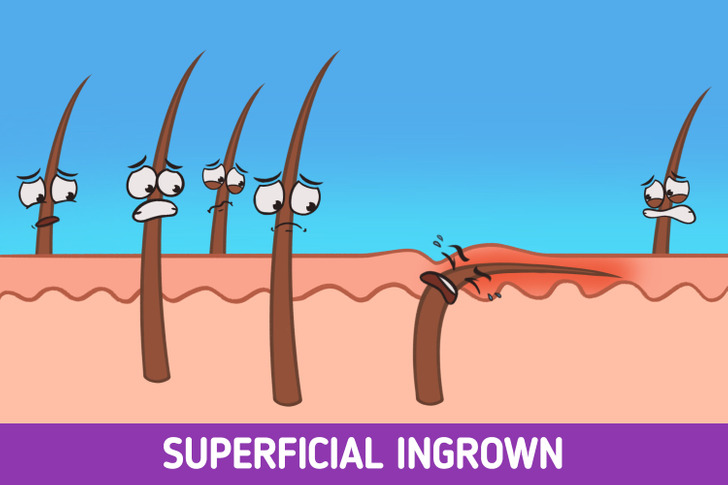
- Friction ingrown: a hair that grows out in an ordinary way, but due to friction caused by tight clothing, its tip grows back into the skin
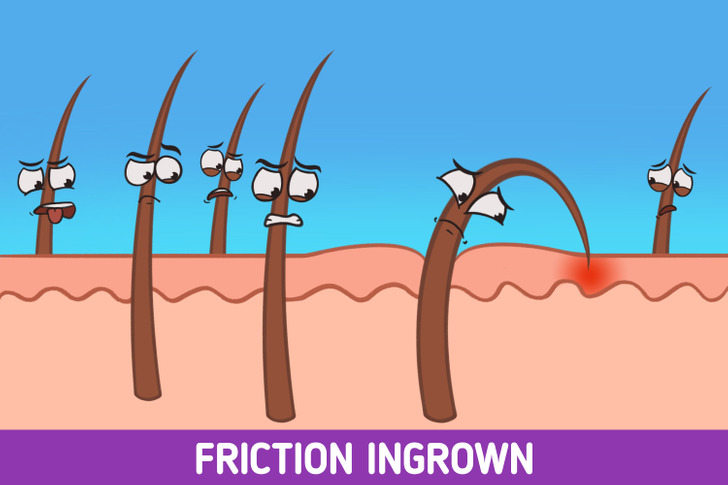
- Spiral ingrown: a hair that is unable to rise to the surface of the skin, so it begins to grow under the skin, forming a spiral around the follicle
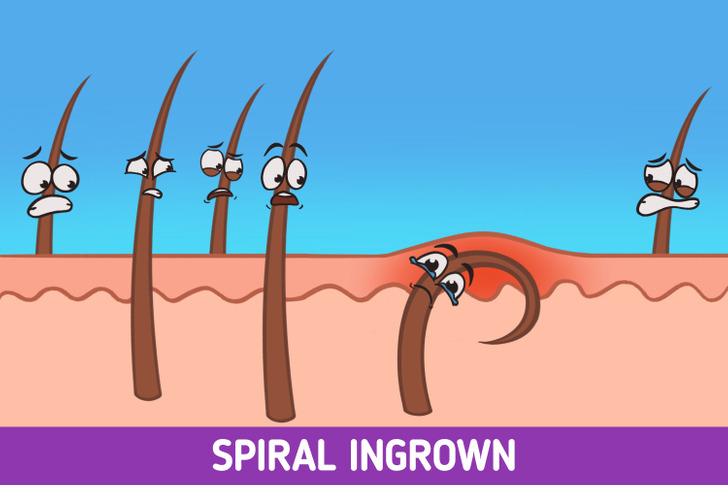
How to prevent ingrown hairs
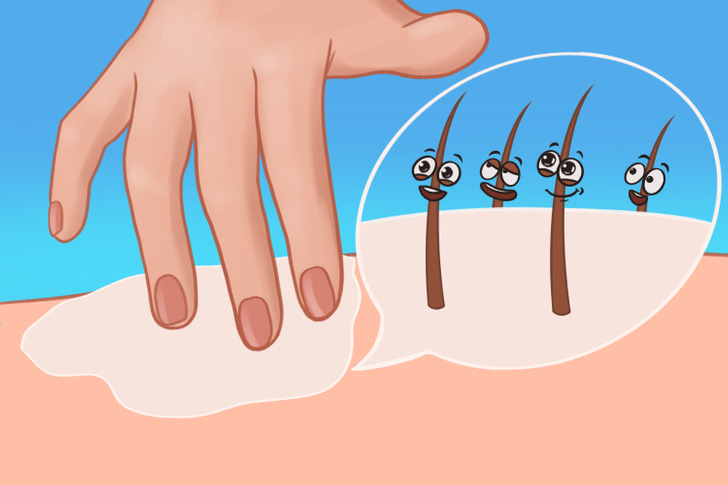
Avoid shaving, waxing, or using a depilator. If you are not ready for such drastic measures, try to use the following tricks:
- Exfoliate your skin regularly. Exfoliating removes dead skin cells and particles of dirt. Thanks to exfoliants, hairs rise above the surface of the skin, and shaving becomes more efficient.
- Moisturize the skin. Moisturizing after shaving maintains the moisture balance and protective properties of the skin. It’s easier for hair to grow through elastic and soft skin.
- Shave properly. Choose disposable razors and make sure they are sharp. Before shaving, be sure to moisten the skin with warm water, then use a gel or another shaving product. The movements of the razor should be smooth, and don’t shave too closely to the skin.
- Avoid tight clothing and underwear, especially after shaving or performing another hair removal method. Loose clothing allows air to circulate, doesn’t create friction, and doesn’t press the tips of the hairs against the skin.
Bonus: what you shouldn’t do with ingrown hairs
- Don’t try to squeeze out an ingrown hair to the surface. This can cause pus and scars to form around the hair.
- Don’t try to pull out the hair or pluck it. It can also lead to scarring, infection, and discoloration of the skin.
- Avoid shaving areas with ingrown hairs. This can provoke the development of a secondary infection.